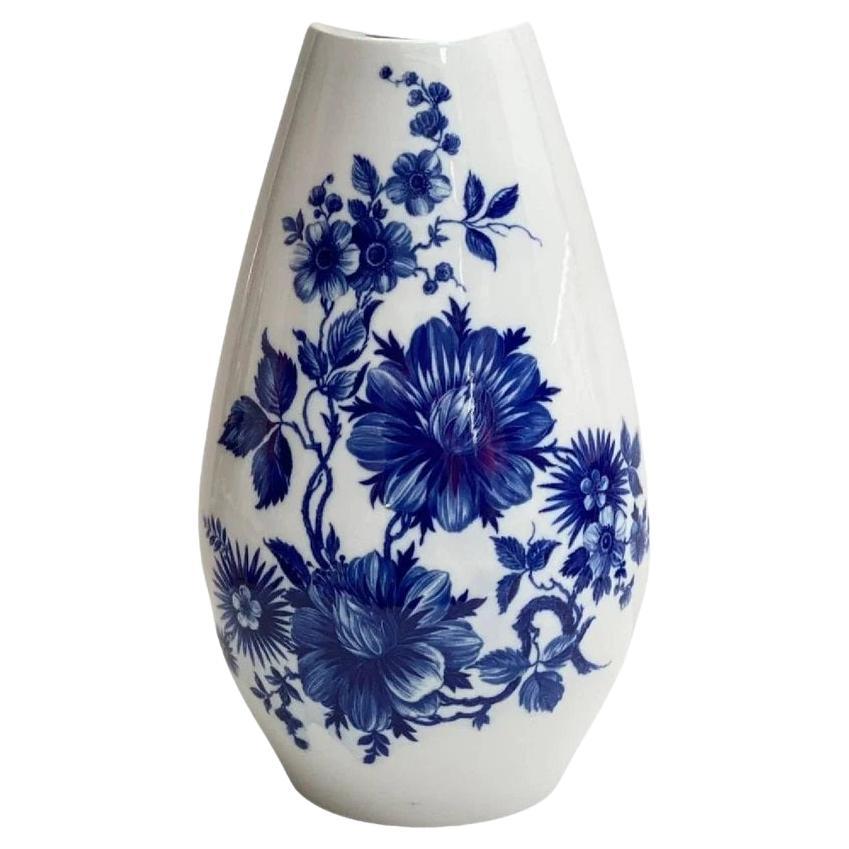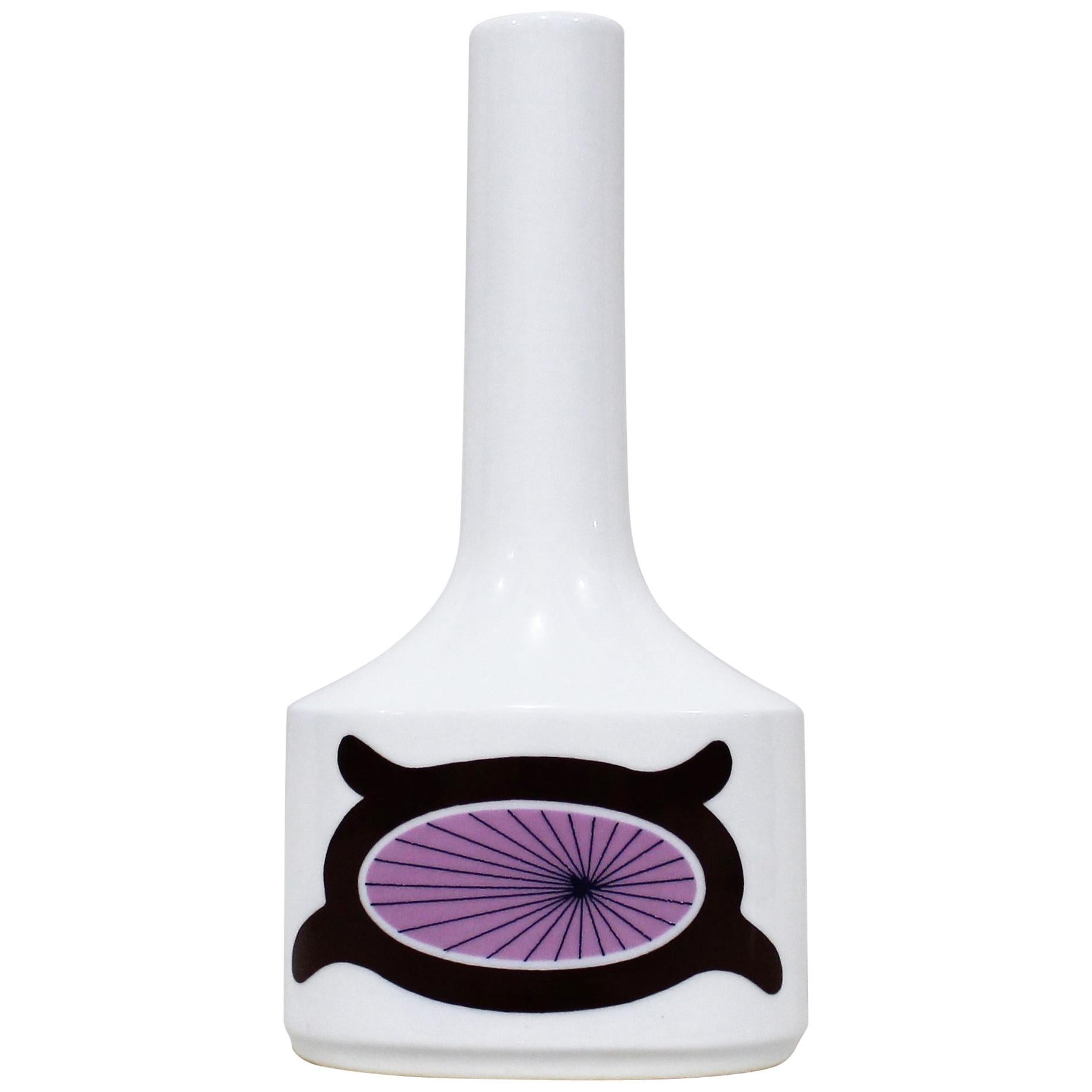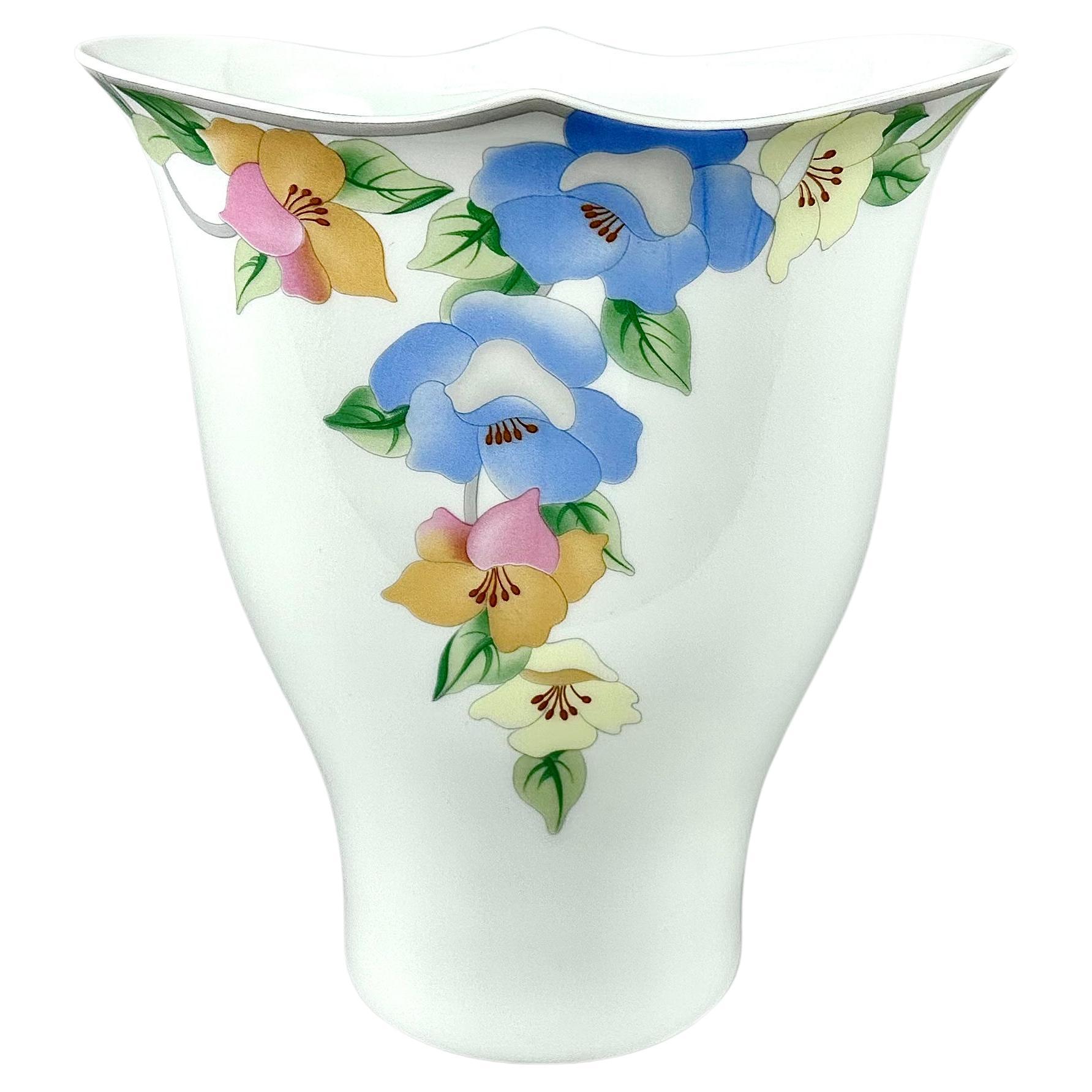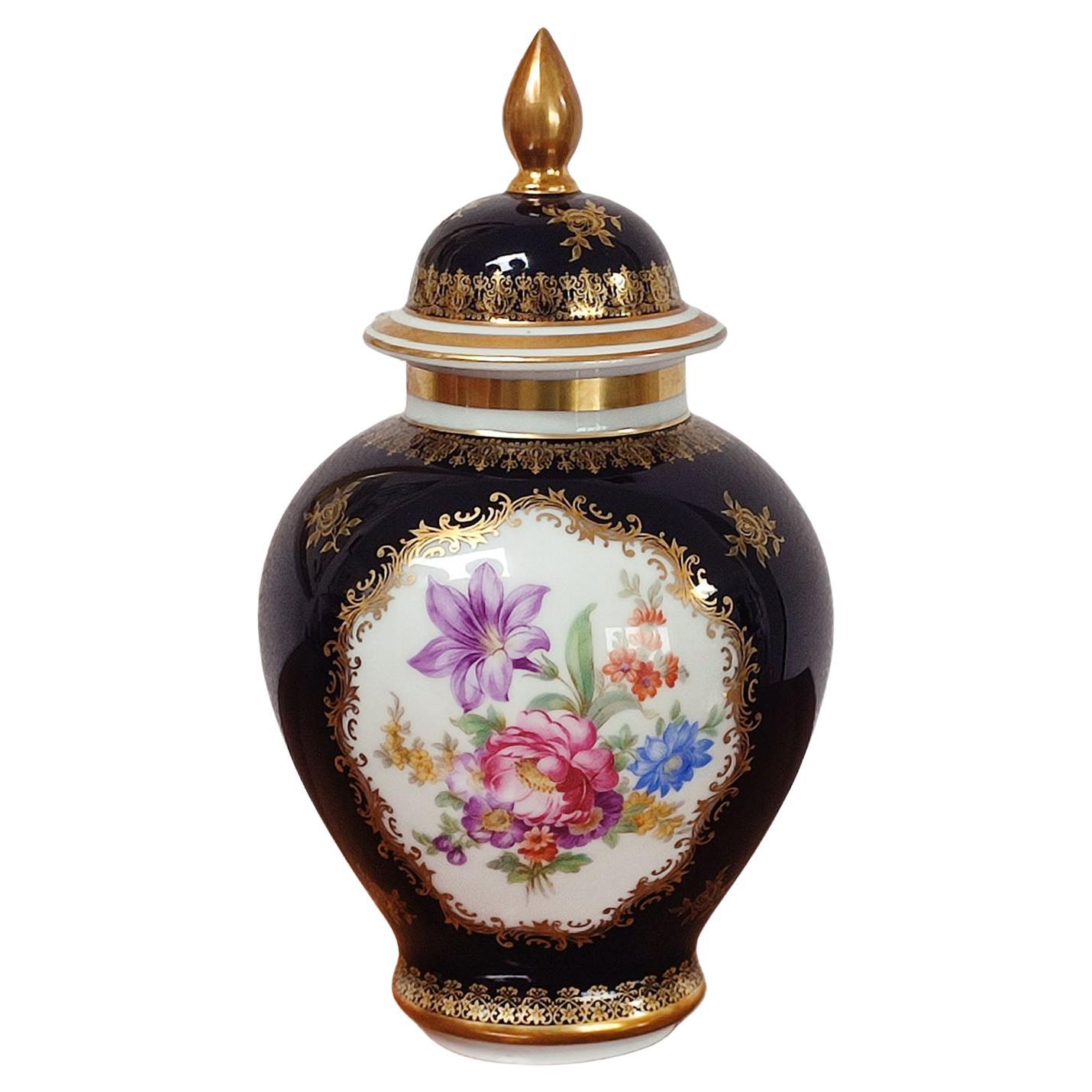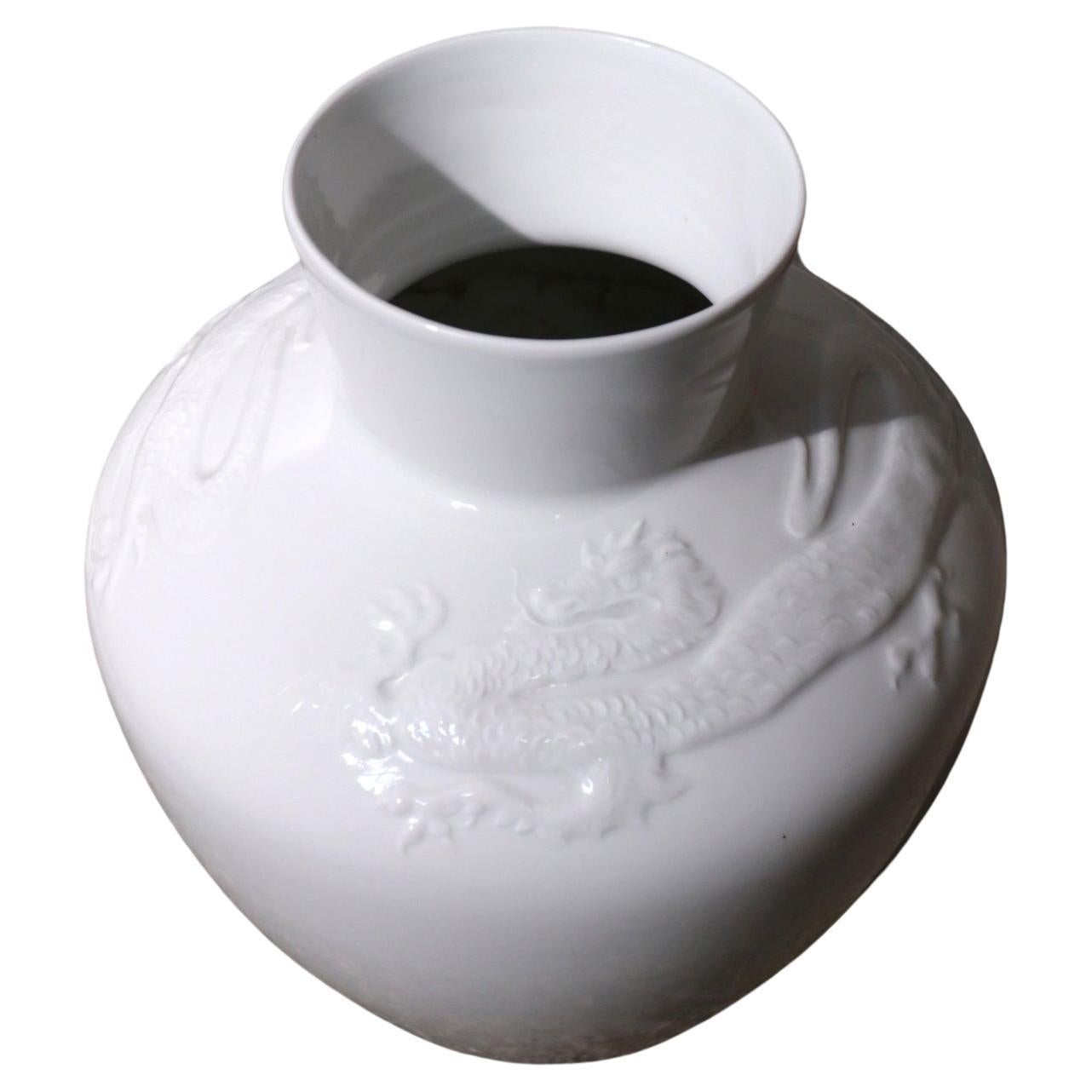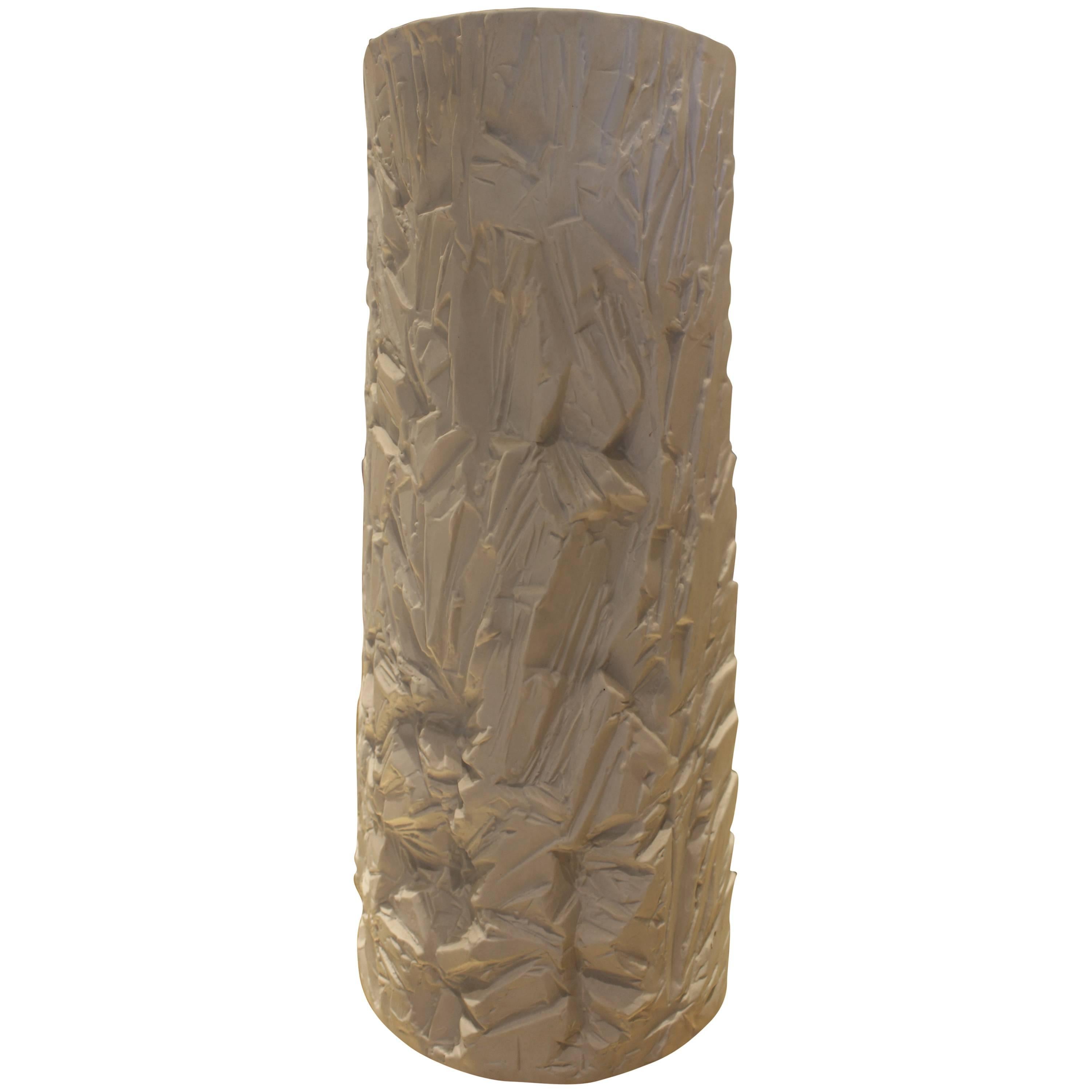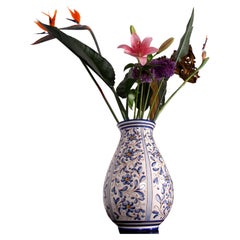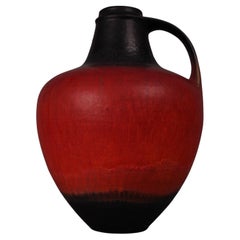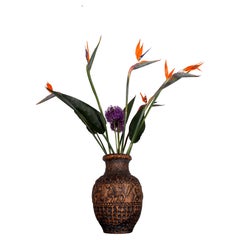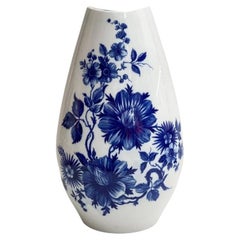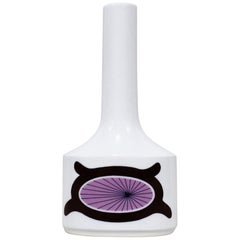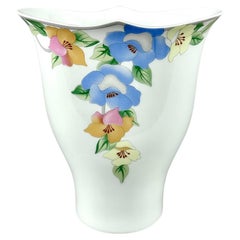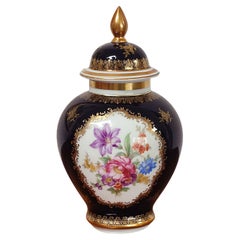Items Similar to Porcelain Schumann Arzberg Midcentury Classic Floor Vase Cobalt Blue Gold beauty
Want more images or videos?
Request additional images or videos from the seller
1 of 19
Porcelain Schumann Arzberg Midcentury Classic Floor Vase Cobalt Blue Gold beauty
About the Item
a real beauty and an absolute rare piece as this is the luxury gilded edition of Schumann Kobalt floor vase range
a very elegant Porcelain SCHUMANN Arzberg midcentury Classic Floor Vase Real Cobalt - Gold
height 48cm - diam. rim: 17cm - weight: 7.7 kg
- in excellent condition!
ENGLISH
Porcelain history
After Lorenz Christof Aecker founded the first porcelain factory in 1838, the mining town of Arzberg developed into the second largest porcelain town in Germany over the years. The company was taken over by Carl Auvera in 1884 and passed to C. M. Hutschenreuther in 1918.
In 1881, the porcelain maker Heinrich Schumann began porcelain production in Arzberg, which was continued by his family after his death. The company, which produced in an imposing factory near the railroad station until 1994, made a name for itself above all with hand-cut openwork.
The traditional Arzberg brand in turn goes back to a porcelain factory run by Christoph Schumann, which was shut down in 2000 after being sold to Theodor Lehmann, numerous changes of ownership (including Schönwald AG, Kahla, Winterling) and the relocation of production to Schirnding. The Franconian porcelain producer developed into a pioneer of functional utility porcelain, not least thanks to its collaboration with designers such as Hermann Gretsch (Form 1382, 1931) and Heinrich Löffelhardt (Form 2000, 1954). Since 2013, Rosenthal GmbH has owned the rights and inventories of the good shape for every day.
SCHUMANN Arzberg PORZELLAN
CARL SCHUMANN PORCELAIN FACTORY
Arzberg, situated on the Nuremberg-Eger railroad line, close to the Czechoslovakian border, owes its reputation and prosperity primarily to its highly developed porcelain industry, the foundations of which were laid in 1881 with the construction of the parent factory of the Schumann Arzberg, Porzellanfabrik, Aktiengesellschaft. The cramped location of the headquarters in the middle of the town was an obstacle to greater development, so that a relocation had to be considered.
CONSTRUCTION OF THE NEW BUILDING
In 1898, the first new building of the present factory was erected on the newly acquired site directly adjacent to the railroad and, through continuous extensions, the present large, in every respect exemplary factory complex was created. The factory, which covers a built-up area of 50,000 square meters, was equipped with the most modern machinery of its time, had 10 porcelain kilns and employed more than 800 people. It also had a modern art studio, where the color prints needed to decorate the porcelain were produced, as well as a sawmill with crates and a wood wool factory. The achievements of the Schumann Arzberg company in the field of social welfare were demonstrated by the dining rooms and dormitories, library and reading rooms set up in a large new building, as well as the residential colony, which currently comprises 19 houses.
From the very beginning, Porzellanfabrik Schumann Arzberg has paid particular attention to the production of openwork porcelain such as fruit and dessert services, fruit baskets, bowls etc. and, thanks to its excellent production facilities for its specialty items, the company is undisputedly in first place in terms of performance and selection. The company's achievements in these specialty items are complemented by the production of high-quality everyday items such as coffee, tea, mocha and breakfast services, fruit, salad, cake and children's sets, which has been a growing success for many years. The extremely good reception which their newly launched dinner services have also met with suggests that the company was on the right track in its endeavors to make porcelain a bearer of refined taste culture by carefully coordinating form and decoration. The name "Schumann-Porzellan" was known throughout the world as a byword for the highest quality German workmanship.
About the disappearance of a porcelain factory (Waldsassen)
CARL AND KATHARINA SCHUMANN
Carl and Katharina Schumann are certainly one of the very rare married couples in which each spouse was made an honorary citizen of their town. Carl Schumann, the founder of the porcelain factory that still dominates our town today, was born in Selb on March 30, 1871 as the youngest son of the then head turner Christian Heinrich Schumann. In 1873, his father set up his own business by founding a company for the production of pottery (building decorations) with a kiln below today's Arzberg porcelain factory. The company had to disappear when the railroad was built soon afterwards. Instead, a porcelain factory was built in the old Prinzinghaus am Markte (Rathausstraße 33) in 1881.
Just three years later, in 1884, the young Carl, who did not have a very rosy youth, was taken from his father by death. After attending secondary school, he began an apprenticeship at the Rieß ironmongers in Bayreuth.
He then took a position with a Hamburg export company, from where he moved to England. There he acquired his generous management skills. At the age of 21, he returned home to take over his father's business, which his tireless creativity brought to its current heyday. Schumann gradually moved it from the city center to its present location and realized the idea of producing the then particularly popular pierced porcelain using the stamping process. A stomach ailment put an end to his promising life on March 27, 1926 in Heidelberg.
The honors he received (1917 Kommerzienrat, March 31, 1921 honorary citizenship of Arzberg. 1925 Privy Councillor of Commerce) were earned not only through his excellent business acumen, but also through his unique attitude as a social entrepreneur. Special mention should be made of the fact that even before the First World War, he granted his workers paid leave and built a large number of apartments. Unfortunately, the grandly conceived "Carl and Katharina Schumann Foundation" of 1920 became a victim of the devaluation of money before it could really come into effect; 450,000 paper marks worth over 8,000 gold marks had been given. Nonetheless, it was replenished and continued by his widow.
That was one of the decisive things about Carl Schumann, that he had found a life partner who was completely like-minded - Katharina Küspert. She was born on July 10, 1874 in Schönbrunn near Wunsiedel as the daughter of the Küspert family, master bakers. The marriage took place in Arzberg on Nov. 27, 1897. She had two sons and three daughters, in whom her parents' legacy and example lived on. Mrs. Schumann soon became something like the mother of Arzberg. It is impossible to say what good she did in detail; she did not even let her left hand know what her right hand was doing. Wherever she heard of a particular need, she immediately provided help in a warm, personal manner.
It played a relatively minor role whether the needy belonged to her own business or not. Of course, she was also involved in all of her husband's achievements that were important to the community as a whole, as she continued to do even as a widow. The emergencies immediately after the collapse gave her a special opportunity to do so. The town therefore awarded her honorary citizenship on the occasion of her 75th birthday in 1949. These honors for Mr. and Mrs. Schumann were undoubtedly made even more special by the fact that each was awarded by a city council whose majority belonged to a party that tended to be particularly critical of the owners of large businesses.
Schumann Arzberg
In Arzberg, 3727 people were employed as workers and employees and in the skilled trades. Of these, more than two thirds (2486 people) were employed in the porcelain industry. If one compares this figure with the ratios mentioned above, it can be seen that at least one third of the total population of Arzberg lived from porcelain in some way. Arzberg can therefore certainly be regarded as a porcelain town. The porcelain industry in particular was rebuilt relatively quickly. Porcelain was one of the first products to be exported again after the war. In addition to its quality, Arzberg porcelain also benefited from the fact that the industry had always maintained good relations with North America. The emigration from Arzberg to North America almost 100 years ago made itself richly felt in these and other cases. The grateful remembrance of the former homeland, which the descendants of those emigrants had preserved for their relatives and the old home town in general, should never be forgotten.
In 1953, Carl Schumann Porzellanfabrik AG had 9 circular kilns and 2 electric cobalt bogie hearth kilns in operation. It employed around 1000 employees and workers, 55% of whom were male. Modern elevators, seamless stone and wood flooring and closed transitions from one building to another were installed and the industrial tracks were extended. After 1945, a new building or extension was also built with a coal bunker, glaze rooms, foundry and white storage. This created a beautiful closed front against the railroad. The sample warehouse was also redesigned. More than 50% of production is exported to all countries in the world, with the exception of the countries under the control of Soviet Russia.
Although the company has long since been converted into a public limited company for economic and legal reasons, it still retains the personal character of the spirit that lived in its founder, especially in the relationship between the management and the employees. The Arzberg porcelain factory, a branch of the Kahla porcelain factory, had 12 circular kilns in operation at the end of the war. Part of the white factory was destroyed in the air raid on April 19, 1945 and was completely rebuilt, including the remaining parts. The workforce grew to around 1000 people. The factory had already switched to better quality porcelain with smooth, timeless shapes before the war and now continued this line in designs by Dr. Gretsch-Stuttgart.
The Schumann Arzberg branch of the porcelain factory C. M. Hutschenreuther AG, Hohenberg, had mainly served as a supplier to the main factory before the war. The severe devastation caused by the prisoners of war after the collapse, which included the destruction of all molds and models, necessitated a reorganization. The factory was put on its own feet and modernized throughout. In 1948/49, a new tunnel kiln plant was built with bright, healthy working areas.
The raw gas for operating the tunnel kilns is supplied by the company's own gas generator plant. The total workforce at the end of the 1960s amounted to 340 employees. After the war, the dental factory in Radebeul in Saxony, one of the largest in Germany, which had been expropriated by the Soviet zone government in 1945, was rebuilt as part of this factory. Although everything had to be recreated, it was able to employ 200 people again due to the reputation of its products. The "Porzellanfabrik Schlottenhof" also expanded its plant with a new building and improved its internal facilities. At the end of the 1950s, it employed around 200 people at three kilns.
- Creator:Schumann Arzberg 1 (Manufacturer)
- Dimensions:Height: 18.9 in (48 cm)Width: 7.88 in (20 cm)Depth: 7.88 in (20 cm)
- Style:Mid-Century Modern (Of the Period)
- Materials and Techniques:
- Place of Origin:
- Period:
- Date of Manufacture:1965-1975
- Condition:
- Seller Location:Landshut, DE
- Reference Number:1stDibs: LU8587234087422
About the Seller
5.0
Platinum Seller
Premium sellers with a 4.7+ rating and 24-hour response times
1stDibs seller since 2023
21 sales on 1stDibs
Typical response time: 1 hour
- ShippingRetrieving quote...Shipping from: Bodenkirchen , Germany
- Return Policy
Authenticity Guarantee
In the unlikely event there’s an issue with an item’s authenticity, contact us within 1 year for a full refund. DetailsMoney-Back Guarantee
If your item is not as described, is damaged in transit, or does not arrive, contact us within 7 days for a full refund. Details24-Hour Cancellation
You have a 24-hour grace period in which to reconsider your purchase, with no questions asked.Vetted Professional Sellers
Our world-class sellers must adhere to strict standards for service and quality, maintaining the integrity of our listings.Price-Match Guarantee
If you find that a seller listed the same item for a lower price elsewhere, we’ll match it.Trusted Global Delivery
Our best-in-class carrier network provides specialized shipping options worldwide, including custom delivery.More From This Seller
View Alltraditional Italian art pottery floor vase floral midcentury classic white&blue
Located in Landshut, BY
beautiful Italian art pottery floor vase
floral pattern
Manufacturer unknown
Design Period 1958 to 1968
Production Period 1958 to 1968
Country of Manufacture Italy
H / height: ...
Category
Vintage 1960s Italian Arts and Crafts Vases
Materials
Pottery
Gerda Heuckeroth Carstens Tönnieshof Midcentury Xxl German Floor Vase JAR 1960s
By Gerda Heuckeroth
Located in Landshut, BY
West German bulbous silhouette floor vase with handle by Gerda Heuckeroth for Carstens Tönnieshof mid/late 1960s.
Although much is known about the various West German pottery manufa...
Category
Mid-20th Century German Mid-Century Modern Jars
Materials
Pottery
rare huge JASBA "AZTEC" FLOOR VASE marked 1 521 45
By Jasba
Located in Landshut, BY
A very rare 'Aztec' relief-décor floor vase from JASBA KERAMIK.
JASBA produced several series of ceramics on themes inspired by ancient civilizations; among the most sought-after t...
Category
Vintage 1970s German Mid-Century Modern Vases
Materials
Pottery
German Floor Vase 50s 60s huge (50cms) sgrafitto Siershahner Feinsteinzeugfabrik
By Sawa Ceramic
Located in Landshut, BY
FLOOR VASE
Siershahner Feinsteinzeugfabrik
DEKOR CAPRI 1950s
Ritzdekor (sgrafitto)
A huge 50s or 60s studio quality 'Klinker' floor vase nr. 54/50 with an sgraffito
decor designed ...
Category
Vintage 1960s German Mid-Century Modern Vases
Materials
Pottery
1950s Studio Keramik floor Vase series GARDA Atelier Huber Roethe Landshut
Located in Landshut, BY
STUDIO KERAMIK FLOOR VASE
Atelier Herta Huber Roethe Landshut 1950s
marked "HR"
Manufacturer ATELIER HUBER ROETHE
Design Period 1950 to 1959
Production Period 1950 to 1959
Count...
Category
Vintage 1950s German Mid-Century Modern Vases
Materials
Pottery
a pair of 1950s Studio Keramik floor Vases Atelier Berta Huber Roethe Landshut
Located in Landshut, BY
an amazing set of 2 STUDIO KERAMIK FLOOR VASES
by Atelier Herta Huber Roethe Landshut 1950s
Manufacturer HUBER ROETHE
Design Period 1950 to 1959
Production Period 1950 to 1959
C...
Category
Vintage 1950s German Mid-Century Modern Vases
Materials
Pottery
You May Also Like
Large Blue and White Kobalt Porcelain Vase by Schumann Arzberg Vintage Vase
By Schumann Arzberg 1
Located in Bastogne, BE
Vintage blue and white porcelain vase
Large cobalt vase
Schumann Arzberg Germany
High, floor Vase Made of porcelain known manufactory Schumann...
Category
1990s German Mid-Century Modern Vases
Materials
Porcelain
Schumann Arzberg Mid-Century Modern Pop Art Ceramic Vase
By Schumann Arzberg 1
Located in Hamilton, Ontario
Schumann Arzberg Mid-Century Modern Pop Art ceramic vase.
Category
Mid-20th Century German Mid-Century Modern Vases
Materials
Ceramic
Vintage Vase by Schumann Arzberg Flower Design, Bavaria, Germany
By Schumann Arzberg 1
Located in Bastogne, BE
Beautiful porcelain vase from the Bavarian company Schumann Arzberg.
This classic vase in interesting and elegant form was created in the 20th century.
It was made of the highest ...
Category
Vintage 1970s German Vases
Materials
Porcelain
Bavaria Schumann, Cobalt Blue and Gold, Porcelain Jar with Lid Germany 1940s
By Schumann Arzberg 1
Located in Bochum, NRW
Porcelain urn with lid, cobalt blue with two medallions hand painted floral décor, richly enhanced with 24K gold painted details. Made by Bavaria Schumann Arzberg, Germany 1960s. Mar...
Category
Vintage 1940s German Urns
Materials
Porcelain
Amazing Porcelain Dragon Vase / Urn Schumann Arzberg Bavaria
Located in Boven Leeuwen, NL
Very nice white porcelain vase with Chinese dragons in relief.
Dated from mid 20th century with the Schumann, Arzberg Germany stamp.
In very good condition.
The factory was founded in 1881 by Christian Heinrich Schumann and a businessman Franz Ferdinand...
Category
Vintage 1970s Dutch Chinoiserie Vases
Materials
Porcelain
Rare and Monumental Schumann Matte White Porcelain Floor Vase
Located in Palm Desert, CA
A rare and monumental Schumann matte white porcelain floor vase, circa 1960.
Category
Mid-20th Century German Vases
Materials
Porcelain
Recently Viewed
View AllMore Ways To Browse
Cobalt And Gold
Cobalt Blue And Gold
Make Up And Beauty Products
The Worlds History And Its Makers
19c Gold
Cobalt Porcelain Set
Cobalt German
English Blue And White Porcelain
Made In Czechoslovakia Porcelain
Pierce And Sons Furniture
Pierce And Sons
Blue White Porcelain Square
Openwork Porcelain
Young Mid Century Modern Dining Set
Old English Porcelain
Soviet Gold
Specialty Furniture Company
Black Porcelain Tea Set
